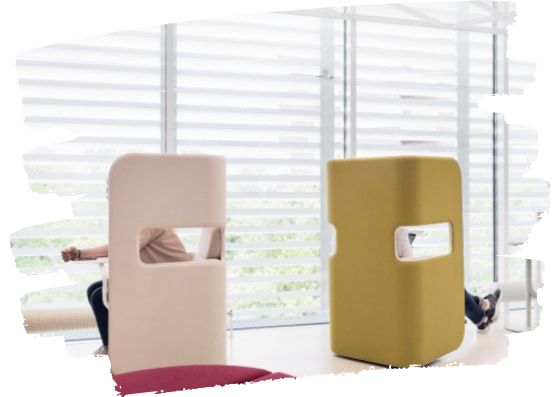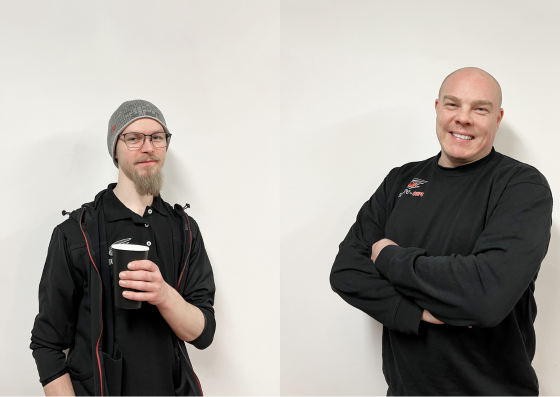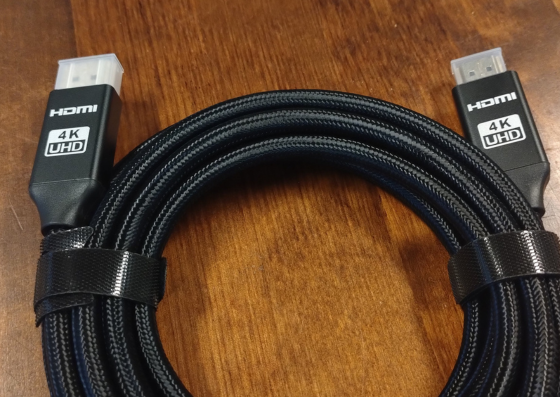💡Connect smart devices and AV - how does BYOD affect companies' AV solutions?

It's time to look into the crystal ball and evaluate current AV trends.
When asked about the most important AV trends in 2023, attention is inevitably drawn to harnessing smart devices and BYOD practices for effective work use. With the increase of intelligent workplaces and collaboration-enhancing spaces, the need for video conferencing rooms is growing even more.
In fact, AV has been BYOD for a long time. People have been bringing their own laptops to conference rooms for decades. What makes this time exceptional is that software like Google Meets, Zoom, or Microsoft Teams has made it less critical to have everyone physically present in the same place to work.
Technology has been developing rapidly lately, especially with improvements in cameras and devices, and there seems to be no end in sight. We'll explain a bit more below what this means for IT managers.
How does the prevalence of BYOD affect AV procurement??
BYOD (Bring Your Own Device) and the use of smart devices have many advantages in the workplace. First of all, having your own device is always available and easy to use without the need to log in to a separate workstation or shared computer. In addition, your own device usually has all the necessary materials readily available, which does not require a network connection or searching for files on a network drive. Furthermore, your own device has a familiar operating system, making it easy and efficient to use. Even if data is in the cloud, your device still has full control and usage rights.
As BYOD (Bring Your Own Device) becomes more common in workplaces, it's important to consider device compatibility during the procurement phase. Each work environment is unique, so it's important to find AV solutions and cables that work with all devices, ensuring smooth operation of AV technology in BYOD environments.
One of the most important new things for 2023 is the proliferation of USB-C, which allows multiple devices to be used with a single connector. Although USB-C is still under development, it is developing rapidly, making several AV cables unnecessary on the desk.
What devices do employees want to use in their workplaces?
The replacement of traditional desktop computers with personal laptops has had a significant impact in many ways. One of the key tasks of IT is to ensure that each employee has their own device. These portable devices are increasingly being carried between home and work. Mobile devices are also being used more and more for work. The popularity of laptops with touch screens is also growing. Perhaps somewhat surprisingly, it has been observed that the use of tablets is decreasing.
These days, the most important thing for employees is to have their work-related data with them and easily accessible. Even though traditional desktop computers are not seen in workplaces in the same way as before, from an AV perspective, the change may not even be noticed. Traditional desktop computers have simply been replaced with laptops, which are used to present and share the results of work in the same way as before.
As a rule of thumb, as the BYOD practice continues to become more common, employees are more likely to bring their own devices to their workplaces. This increases the need to upgrade AV technology. Therefore, it is important to consider current and future compatibility when IT professionals consider new purchases. Simply ensuring compatibility with current devices is not enough; it is important to also consider future updates and advancements.
What factors are currently changing the demand for AV technology the most?
As smart workplaces and collaboration spaces become more common, the demand for video conferencing rooms is increasing. When looking at meetings between employees, customers, and business partners, Teams has become significantly more common, at least in our customer base. Teams can almost be called a standard, and Zoom is also widely used alongside it.
Both software tools are increasingly being used as remote work and virtual meetings play a growing role in modern work. Teams and Zoom have established their place in the daily work of many organizations and are used extensively for communication between different locations. It can be said that Zoom and Teams are excellent tools for organizing virtual meetings and it would be really difficult to imagine organizing them without these tools in today's world.
From an AV perspective, it is important to ensure that the devices are always compatible with all of the selected video conferencing software solutions. However, ultimately, it often depends on the customer's own IT and the needs of their end-users to determine which solution they choose.
It is also important to note that companies, educational institutions, and other organizations all have their own specific needs for the use of video conferencing rooms..
For example, in educational institutions, a smaller room with good equipment may be sufficient for remote teaching, while larger events such as auditoriums may require multiple cameras and streaming capabilities.
In companies, video conferencing rooms are often the company's business card and a significant creator of image. In this case, significant investments may be made in AV equipment for branding reasons.
Indeed, the need for conferencing spaces depends heavily on the identified needs of the organization itself, as well as the number of participants in each space and whether the participants are located locally or scattered around the world.
What should be considered in AV acquisitions to make the most of BYOD and smart devices?
The increasing popularity of BYOD means that compatibility between personal devices and AV equipment is becoming an increasingly important factor in AV acquisitions. A good starting point for AV acquisitions is to take into account the current device inventory and ensure compatibility with BYOD and smart devices.
It is also important to consider the future and ensure that the acquisitions meet the needs in the long term. It is important to choose AV devices that are compatible with all the devices in use. The worst-case scenario is when new devices are acquired that do not work with BYOD and smart devices.
One of the most important factors is to ensure that AV equipment is compatible with different operating systems and AV standards. This requires careful planning and testing before making any purchases. Additionally, it is important to consider that trends and needs evolve, and users may be using different devices and operating systems even just a few years from now.
In addition, the importance of video conferencing rooms cannot be overstated. The most important features of these rooms for businesses vary depending on their intended use, but all should have high-quality camera and microphone capabilities as well as sound reproduction that is appropriate for the intended use. However, one of the most important features is ease of use and reliability. Therefore, during the acquisition phase, attention should be paid to user needs and supporting features to ensure that the use of the rooms is as smooth and reliable as possible.
Choosing the right video conferencing software for a company depends in part on what tools the company generally uses. For example, if Microsoft products are in use, Microsoft Teams may be a good choice as it integrates well with other Microsoft products and is available to all users by default. On the other hand, users may already be using their preferred programs for video conferencing, so this should also be taken into account. Companies using Google services may consider using Google Meet. The most important thing is to choose software that is approved by users and IT together, easy to use, and genuinely integrates into the company's needs and IT architecture.
Often, those responsible for AV acquisitions face the challenge of how to design and implement AV systems to be as flexible and versatile as possible. Good planning easily pays for itself, as it avoids compatibility problems in the future when purchasing new devices, which can cause unnecessary costs and difficulties.
In the best case scenario, the AV equipment and infrastructure fully support the use of personal devices and video conferencing software. The best way to ensure this is through close collaboration between the IT department and the AV supplier. An expert can often take into account the current device inventory and evaluate future equipment needs to ensure seamless operation. This approach can also help to reduce potential surprises or expenses.
How can companies ensure that employees' personal devices are secure and protected in the AV environment as well?
When implementing a BYOD policy in companies, the company's IT policy and requirements are very important, and they are not directly related to the AV environment.
It is important to remember that BYOD is more related to the company's own way of working with information security. This is because the use of employees' personal devices can be very mixed, and there may be individual problems with the devices. In addition, the devices may have old connections, which can cause compatibility issues.
Fortunately, modern devices are already standardized, which makes the situation easier in terms of compatibility with the AV environment. However, it is important to ensure that all devices are compatible and protected in order to minimize potential risks.
Regarding AV, it should also be noted that generally speaking, more and more AV devices communicate over the network and use the IP protocol. Therefore, it is important for risk management to consider how the networks are protected. However, in this case, there are no specific exceptional requirements in AV itself that need to be considered.
It is important for companies to consider their acquisitions when it comes to laptops and other devices, for example. It is important to ensure that the devices purchased are suitable for the AV environment and provide an efficient working method. This often requires collaboration with the IT department, as they usually have influence over purchasing decisions and the best overall view. The IT department should be involved in purchasing decisions and should consider how the devices fit into the company's work environment and can be best supported.
The most important features of video conferencing rooms for companies are high-quality camera features, microphones, and audio output. However, the most important feature is ease of use and functionality. During the procurement phase, it should be ensured that the equipment is as easy to use and reliable as possible so that video conferencing runs smoothly without any issues.
What is the price range for a well-functioning BYOD environment that is optimally supported by AV?
The price depends on the size and requirements of the space. There is no practical upper limit, as there are many options for different types of rooms and needs.
For example, a well-functioning video conferencing solution for a small room of two people may cost only €300-1000, and the user is already satisfied.
A few thousand euros are enough for a basic solution that includes a display, a small camera, and perhaps a speaker, which can handle a few people in a meeting.
As we move to larger spaces, typically higher quality cameras, microphones, and larger displays are needed. Cameras designed for larger spaces typically cost at least €1500. A quality microphone system can also cost several thousand euros, and ceiling microphone solutions can cost up to €4-5,000 each. There is no practical upper limit for larger spaces, and the final price is determined by the needs.
When making IT equipment and software purchases, AV purchases should also be considered in the same cycle that is most natural for the company. The most effective AV procurement strategy is definitely good cooperation with an AV supplier and considering the entire solution openly with the IT department and AV supplier from the beginning. This ensures that everything works seamlessly and unexpected costs are avoided in the future.
If you need expert help with AV-related issues related to BYOD devices, it is recommended to always contact AV experts. For example, in educational institutions or certain fields, there may be their own procurement channels, but in general, it is always advisable to turn to experts.

 By
By


